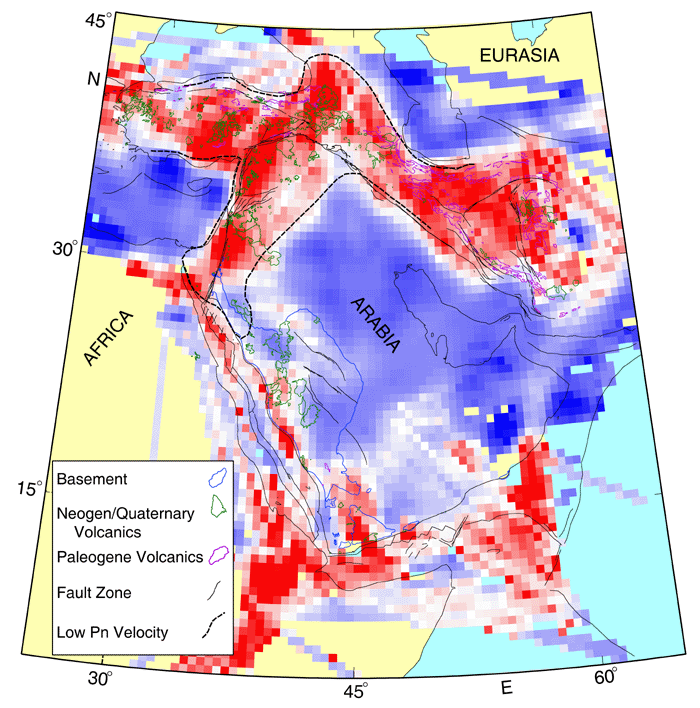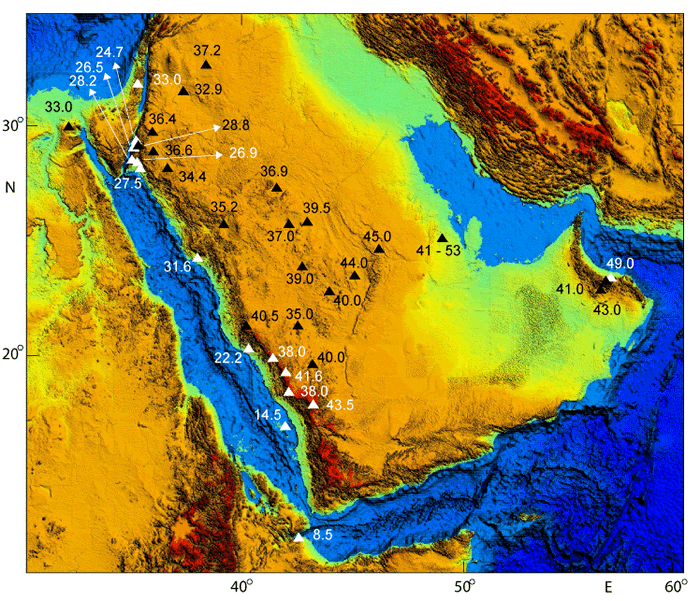The Cornell Saudi Arabia Project
Project Summary:
The main objectives of the Cornell Saudi Arabia research project are: (1) study the seismic attenuation characteristics of the crust (Lg) and uppermost mantle (Sn) of the Arabian lithospheric plate, and (2) determine the crustal thickness and map the geometry of the Moho, especially in Saudi Arabia. The large amount and quality of the databases that we have used are by far the most comprehensive and complete as of 2005. The results are striking: we have carefully mapped the boundaries of the high attenuation zones in the uppermost mantle to show the anomalous nature of the lithosphere beneath most of Iran, Turkey, and surprisingly beneath most of Syria, Lebanon, Jordan, Israel, and Palestine. In addition, we determined the relatively rapid transition from an oceanic-type to an average continental crust along the Red Sea margin. Moreover, we argued that there is no significant variations in the crustal thickness between Archean and Proterozoic continental crusts.
We thank King Abdulaziz City for Science and Technology (KACST) for providing some of the data for these studies.

Map showing the Sn tomographic model overlain by the tectonic map of the region and the Pn contour lines corresponding to low Pn velocity (Al-Lazki et al., 2003). Regions of high Sn attenuation correlate well with regions of low Pn velocities. Also, regions of Sn attenuation correlate with regions of Cenozoic volcanics. Al Damegh et al. (2004), see publications.

Moho depth results from teleseismic receiver function analysis with error estimates plotted over a topography map. The thickest crust is along the Arabian shield escarpment. Thinner crust was observed along the Red Sea coast and Gulf of Aqaba. A dramatic change in Moho depth between stations along the Arabian shield escarpment and stations along the Red Sea coastline can be observed. Al-Damegh et al. (2005), see publications.
For questions or comments, please contact Muawia Barazangi: mb44@cornell.edu.
Last updated: March 2016